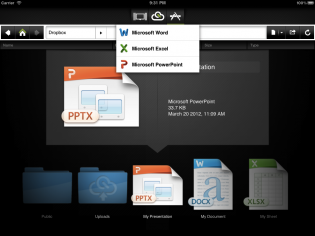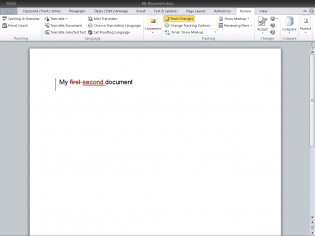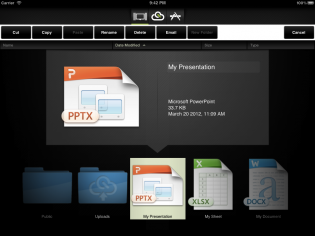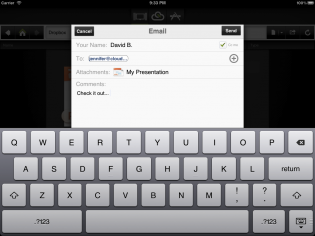

CloudOn has succeeded in a very busy space. Where many vendors are moving towards a proprietary model that diverges from the norms of the industry, CloudOn has taken pains to present to tablet users existing products that we already love and know how to use. CEO Milind Gadekar calls this a “silo problem” and we’re more than happy to tackle it with him.
The iPad app debuted in January, allowing users to connect their Dropbox accounts to a free cloud-based instance of Microsoft Office: Word, Powerpoint and Excel were present. As opposed to mimicking the established behaviour of Office users, the app went right to the source: Microsoft itself. CloudOn uses a virtualized instance of a Windows to run Word, Powerpoint, Excel and Adobe Reader, and plans to add more options in the future. The resolution is just right to be touch-friendly (though the Windows instance looks pixelated and drab on the new iPad’s Retina Display).
Gadekar tells me the most important thing to CloudOn users is the knowledge that their data is safe. To that end, in addition to Dropbox integration, the company is adding Box to its growing storage repertoire. When logging in you have the ability to sync CloudOn to either service, allowing you to open existing documents in a virtualized Office instance or create a new one and save it. Depending on the connection speed, responsiveness and performance is good to excellent, though we noticed when attempting to type this article that there was a noticeable delay between the key press and visibility on the page. The issue was mostly avoided using a hardware keyboard. The latency problems should be improved in the coming months, says Gadekar, as Canadian servers are added to offset the load.
“People want to be more productive, but there are so many different devices,” says Gadekar. “You don’t want a Windows experience on the iPad. You want an experience optimized for the end device. CloudOn addresses the fragmentation.”


The app has been an incredible success. It had to be taken down from the App Store merely days after its initial release due to high demand on CloudOn’s servers. Since then it has been either at or near the top of the Productivity charts in both Canada and the U.S., and with version 2.0 it seeks to stake its claim there permanently. When the app launched in Canada on January 13th, it took less than 24 hours to get to the top of the charts.
Unlike the competition, CloudOn is a free service, and integrates with the iPad’s built-in email client to send documents directly from the app. You can view JPEGs and other image files from within the app, with the cloud infrastructure adapting to the user’s demands depending on the application.
CloudOn plans to monetize in the long-term using a freemium model like Evernote; basic features will always remain free, with premium options likely costing a small monthly or annual fee. While Gadekar wouldn’t speculate as to which features would eventually become fee-based, it’s easy to speculate that it will be usage-based, with unlimited document editing coming at a cost. “We don’t want to discourage usage,” he says. This attitude has helped keep CloudOn at the top this year.
And what about Android? Stay tuned, says Gadekar. “We should have an announcement within a month.” While CloudOn is perfect for individual users, the goal is to roll out the service to the millions of enterprise users who have an iPad or Android tablet and always want quick access to their documents or PDFs. The goal beyond version 2.0 is to add collaboration, shared workspaces and, ultimately, the drive for greater productivity.
Check out CloudOn 2.0 for iPad in the App Store.
MobileSyrup may earn a commission from purchases made via our links, which helps fund the journalism we provide free on our website. These links do not influence our editorial content. Support us here.


